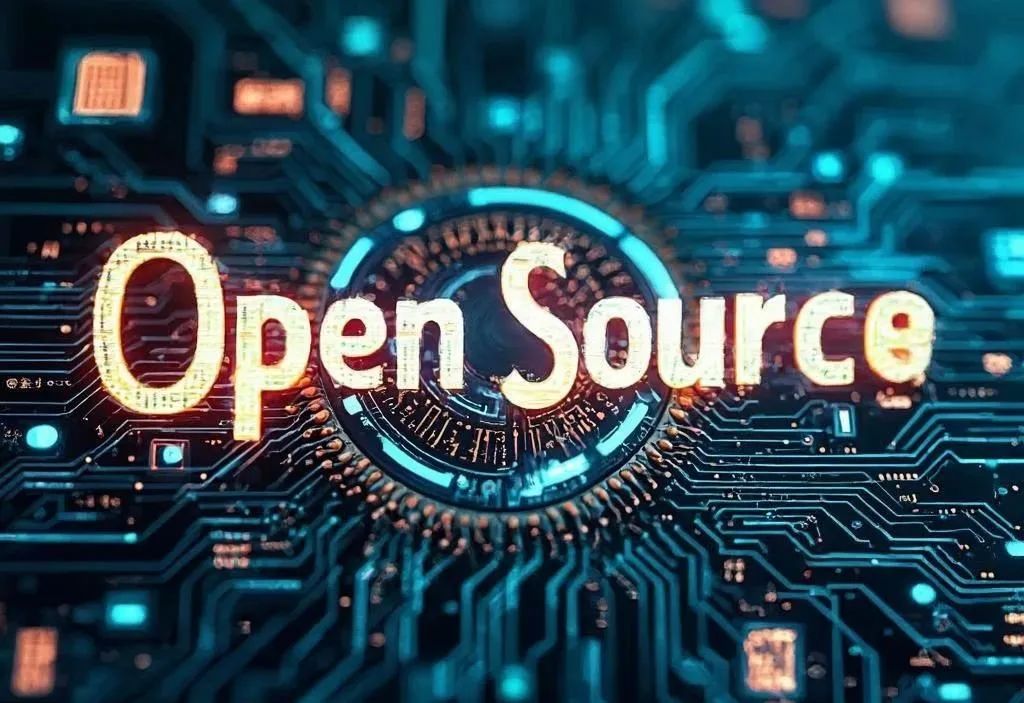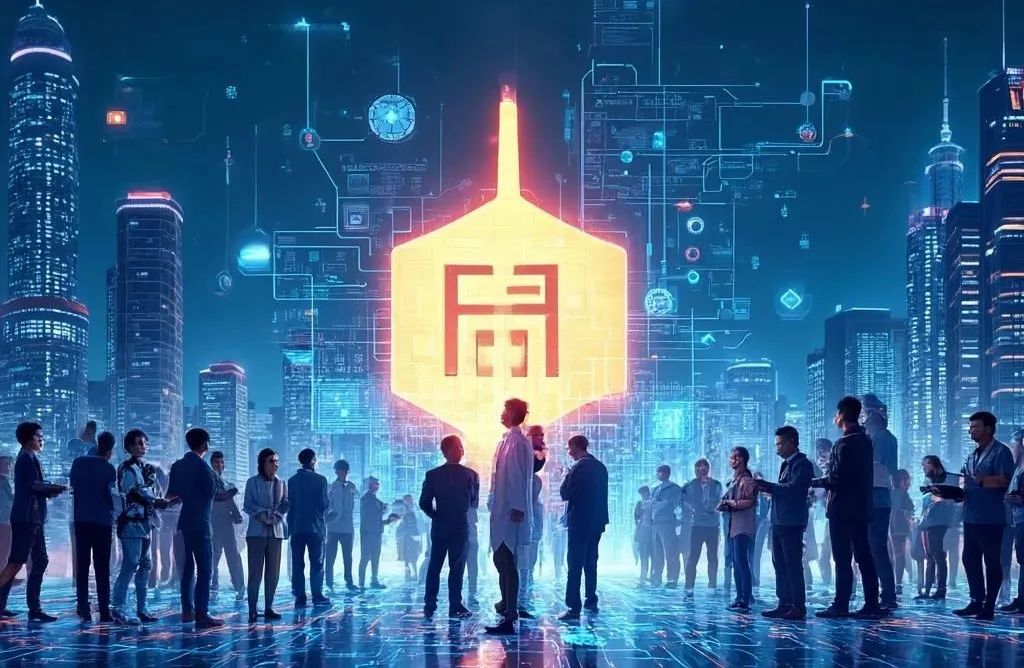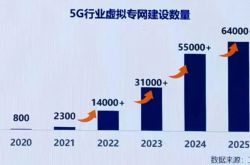Inclusive Technology's Momentum: Where Will Open Source Lead Us?
![]() 02/19 2025
02/19 2025
![]() 846
846
Open source is shaping the future of software and has emerged as a leading model for global technological and industrial innovation. The advent of the 'open source' concept marks an idealistic and romantic chapter in computer development, embodying the ideals of technological freedom and empowering tech enthusiasts.
Amidst the surge in digitization, open source serves not only as a pivotal driver of digital economy development but also constructs a dynamic and innovative global industrial ecosystem. This spans from the foundational logic of software development to the cutting-edge exploration of technological innovation, and from the optimization of industrial structures to the thriving of ecosystem constructions.
As we step into a new year, where will open source steer us?

The 'Golden Age' of Open Source + AI
Open source projects like the Linux operating system, the Llama AI large model, and the PyTorch deep learning framework have demonstrated that 'open source' continually fuels industrial vitality and innovation. Their values transcend technology itself, becoming strategic advantages in spearheading new technological revolutions and industrial transformations.
Globally, open source has become a cornerstone of technological and industrial innovation. The number of global open source software projects consistently grows, with open source AI thriving. According to GitHub, the world's largest code hosting platform, contributions on Github increased by 15.6% year-on-year in 2024, and the total number of general-purpose generative AI projects surged by 95.7% annually. By 2023, Github hosted 70,000 general AI projects, while Huggingface boasted over 300,000 models, with a 200% growth rate.
Currently, 97% of global software developers and 99% of enterprises leverage open source software. Most foundational, industrial, and emerging platform software are built on open source. Statistics reveal that without open source software, enterprise R&D costs would soar to 3.5 times the current level.
In AI, the open source model community is vibrant. Supported by Meta's open source large language models Llama and Llama2, the community engages in intensive scientific research and engineering iterations. This includes attempting to harness smaller models to mimic the capabilities of larger ones, supporting extended contexts, and adopting more efficient algorithms and frameworks for model training.
The open source community has achieved a degree of inclusive technology, enabling people worldwide to share the latest AI technological advancements. So, what novel changes await the open source industry?
Recently, Tech Cloud Report interviewed Li Wei, Deputy Director of the Cloud Computing and Big Data Research Institute at the China Academy of Information and Communications Technology (CAICT). Li Wei noted that more prominent enterprises are embracing open source as a critical business development strategy. Noteworthy changes brought by technology to open source include the deep integration of AI and cloud, and the evolution of the CPU architecture towards intelligent computing systems.
In recent years, China has robustly constructed a domestic open source system, establishing organizations like the OpenAtom Foundation, the Cloud Computing Open Source Industry Alliance, and the CCF Open Source Committee. These organizations have continuously developed and implemented beneficial practices in infrastructure building, project community nurturing, and industry promotion and application, achieving positive outcomes.
China boasts the world's largest developer community, with the number and growth rate of open source participants ranking among the highest globally. The country also houses 30 million open source projects.
A vast market fosters extensive applications. China is the world's largest open source application market, with numerous super users emerging, such as Alibaba, JD.com, ByteDance, and Tencent. Their e-commerce platforms and social networking technology systems are at the forefront of innovative open source technology applications globally, significantly contributing to the mature evolution of open source technology.
Currently, China is exploring pathways to develop new types of productive forces. In this era of opportunities and challenges, which aspects of China's open source industry can achieve leapfrog development? Li Wei stated that China's enormous market and new national system have created fertile ground and a favorable environment for open source system construction.
Open source ecosystems represented by HarmonyOS and OpenEuler have yielded impressive results. As of now, the number of devices based on the open source HarmonyOS has surpassed 1 billion. Since 2024, OpenEuler's new server operating system market share has exceeded 50%, with over 5 million new installations and a cumulative total exceeding 10 million. It is widely used in core application scenarios across industries like the internet, finance, and telecommunications, achieving large-scale commercial deployment.
Simultaneously, open source is becoming a pivotal support for the rapid development of AI in China. Recently, The New York Times observed that Chinese enterprises are narrowing the AI technology gap with the United States while further accelerating development by sharing open source technology.
The New York Times quoted numerous technology experts and researchers from Chinese tech companies who believe that open source technology is a key factor in the rapid development of AI in China. They foresee open source AI as an opportunity for China to catch up and surpass others in global competition.

China's Open Source Journey: Navigating Challenges
Compared to overseas open source projects, domestic ones share similarities but also exhibit unique Chinese characteristics in project conception, technical implementation, application scenarios, and operating models. Li Wei explained that globally, some open source projects adopt a foundation form, while others follow an operational model akin to the Android alliance.
In China, there are both the OpenAtom Foundation and operational models like the Open Source Community Advancement Program (OSCAR) at the CAICT. These bring together developers and enterprises through communities to concentrate industry forces on collaborative research and development in specific technical fields, ultimately forming standardized products that can be replicated and promoted.
For instance, the OpenAtom Foundation, an open source project incubation platform, has nurtured outstanding projects like OpenHarmony and OpenEuler. Additionally, the Cloud Computing Open Source Industry Alliance (OSCAR) of the CAICT has assisted over 20 enterprises in establishing open source offices and promoted the open source security national standard assessment of over 50 enterprises and 100 software products.
It has successfully incubated key project community operations, such as the AI Cloud Operating System Project (AICOS) of the Computing Network Cloud System Open Community (CNCOS). This has effectively overcome technical challenges in integrated scheduling in the computing network cloud field, with over 50 member units. Over the past four years, it has also showcased the power of open source in transforming various industries.
Like a coin, open source has both advantages and challenges compared to closed source.
One current challenge facing China's open source industry is the relative dispersion of forces and resources. Many open source projects exist for the same technology, making concerted efforts challenging. Regarding this, Li Wei believes that open source construction should focus on a single point to avoid dispersion. Large software enterprises need to concentrate on collaborative research and development, strengthening the layout of open source projects in emerging technologies like AI and intelligent cloud operating systems, jointly fostering a healthy open source community.
Secondly, the security issues stemming from openness need addressing. With the continuous growth in open source software projects and the rapid expansion of fields covered by open source technology, security issues are becoming increasingly prominent, encompassing risks in security vulnerabilities, information leakage, password management, etc. In the latest year, 84% of global codebases contained at least one known open source vulnerability, with 74% being high-risk.
Furthermore, some open source software involves issues like open source licenses and intellectual property rights. As a latecomer to open source, China still needs to further refine its open source rules and standards. In particular, it is essential to strengthen efforts in managing open source security vulnerabilities, improving compliance with open source licenses, and enhancing open source security governance.
Regarding the risks faced by the open source industry, Li Wei believes that establishing a comprehensive set of pre-event, in-event, and post-event standard procedures is crucial in the process of open source introduction and evaluation. Beforehand, enterprises must establish an internal standardized open source system and implement the management system with specific responsible personnel. Open source security assessment methods and related software management platforms are also necessary options in the software development process. Simultaneously, a clear software bill of materials (SBOM) should be formulated to fully grasp open source and non-open source components.
During the event, it is essential to monitor the entire development and operation process, analyzing license conflicts among different open source components in the system. Additionally, the operating status of the open source community needs monitoring, and communities that have ceased operations should be promptly replaced.
Post-event, an exit mechanism is vital. Although open source knows no borders, the world's mainstream code hosting platforms, open source foundations, and a plethora of core open source projects and licenses are still controlled by other countries, posing a risk of supply disruption at any time. When open source software is discontinued, having alternative software to fill the gap is crucial, necessitating a corresponding exit mechanism.
At the 2024 OSCAR Open Source Industry Conference, it was mentioned that China's open source industry leads the world in open source hardware industries like humanoid robots and chip instruction sets. Regarding the future development trends of open source in these fields, Li Wei stated that the CAICT has accumulated rich experience in the open source industry. Relying on open source operating systems like the AI Cloud OS (AICOS) open source community, it will focus on the compatibility and adaptation of underlying hardware and software on one hand and the operation and open sourcing of interfaces for different upper-level applications like humanoid robots and AI on the other.
In 2025, the CAICT will continue to deepen the application capabilities of the AI cloud operating system across more industries and scenarios, enabling it to play a role in diverse industries such as providing applications and services related to low-altitude computing networks, humanoid robots, and cloud robots. Simultaneously, the CAICT will expand open source ecological cooperation, further technical collaboration with more institutions and enterprises, gather strengths from all parties, and empower more industries.
Beyond AI, open source technology has been implemented in various fields like data security, smart homes, energy conservation and environmental protection, and even aerospace. For many enterprises and industries, embracing open source is no longer a 'choice' but a strategic consideration to adapt to the market competition environment.
Concurrently, a wave of open source construction is sweeping the nation. Wuhan has unveiled the country's first open source system construction plan. The open source community rooted here boasts over 7.5 million global community users and is growing into a highland for open source and open innovation. Beijing actively promotes the construction of the Beijing International Open Source Community, deploying numerous fundamental and forward-looking open source projects in key areas like cloud computing, big data, AI, and autonomous driving.
Shanghai is exploring new open source and promotion models for large models, lowering the threshold for large model training for a wide range of innovation and entrepreneurship teams and small and medium-sized enterprises. Guangdong utilizes open source events and competitions as an ecological platform to organize and promote open source industry exchanges and guide the creation of provincial-level open source-oriented special industrial parks. Governments at all levels attach great importance to and actively support the construction of the open source ecosystem, with all parties jointly forming a vibrant picture of China's software industry and open source ecosystem development.
China's journey into the realm of open source is akin to navigating a vast, challenging ocean. As the AI era dawns, open source has emerged as a pivotal force in the global digital economy, promising benefits for all. Presently, China's open source community stands at a takeoff point, where the industry is carving out immense opportunities for enthusiasts. This not only broadens our horizons but also pioneers new business models within the open source landscape. The potential it holds for future technological transformations may well surpass our wildest imaginations.
Li Wei from the China Academy of Information and Communications Technology (CAICT): How does the rapid convergence of cloud computing and AI herald a new epoch of intelligent computing?
Exclusive Interview with Li Wei from the Cloud Computing and Big Data Research Institute of the CAICT: The triumph of ChatGPT underscores the indispensable role of cloud computing as the 'central nervous system' of the digital world.
Fake open source, merely a gimmick? The truth about open source large models might surprise you!
Is open source the inevitable future of large models?
[Original Article by Tech Cloud Report]
When reprinting, kindly attribute to 'Tech Cloud Report' and include a link to this article.





